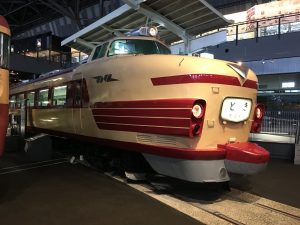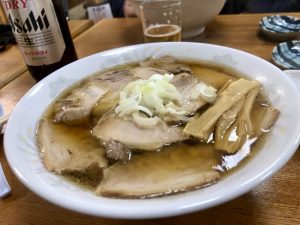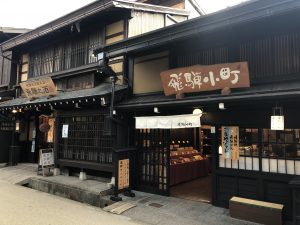Hokkaido Sea Ice Tour
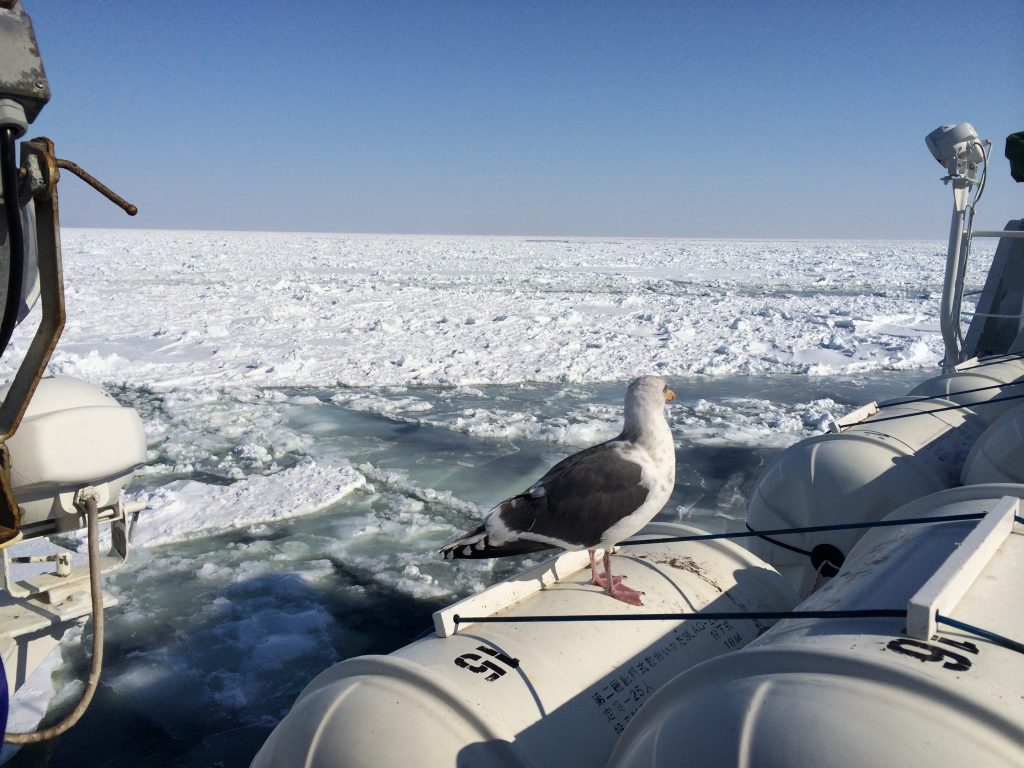
One of the unique sights in Japan is the annual arrival of the floating sea ice to the northern edge of Hokkaido Island, starting around the beginning of February. Japan is one of two points furthest south that the sea ice extends during the winter maximum (the other is eastern Canada). The unique conditions that produce such a progression of ice south can be read about here.
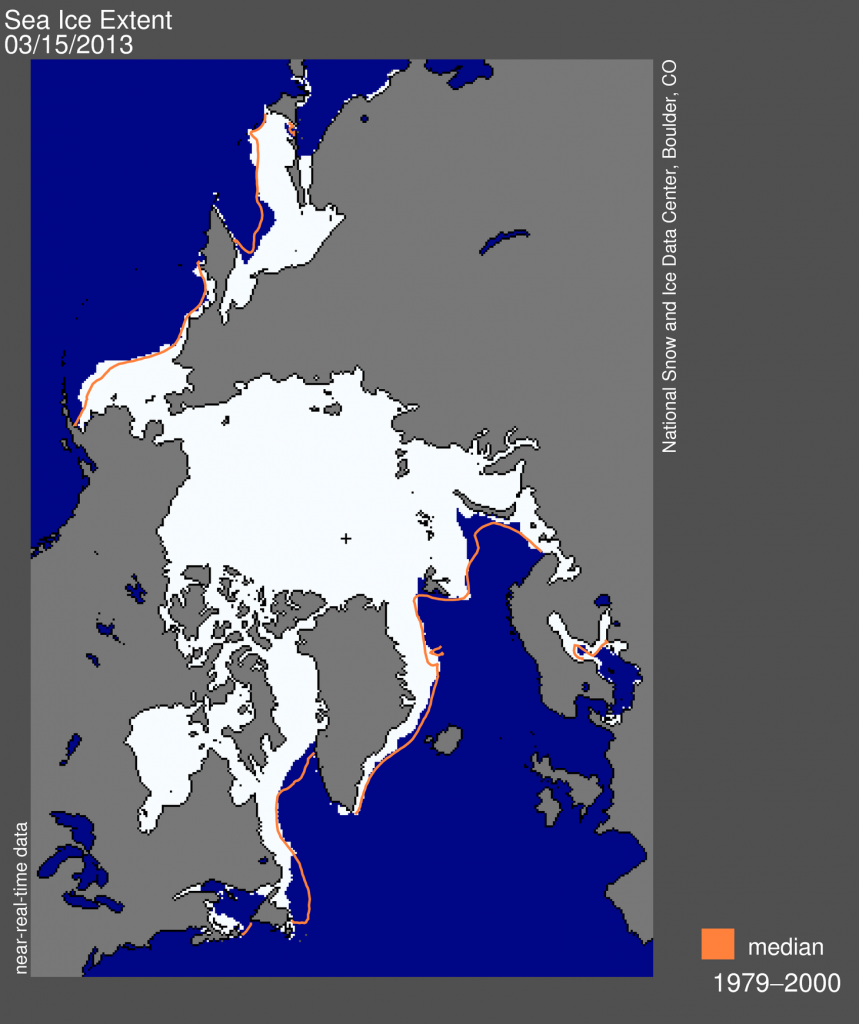
Along the northern coast of Hokkaido are three major towns where you can view the sea ice, Shiretoko, Abashiri and Monbetsu. While there are plenty of other sights to see in the area, traveling around Hokkaido in winter can be difficult so detailed planning is required. Hiring a car is also an option, especially during March when the roads are less likely to be icy. However, as you can see from the temperature record, it still gets very cold during the evenings so if you are worried about getting stranded or lost at night, then public transport is the safest option.
Deciding what to see and how to get there
You will have to decide the following for your trip to north-eastern Hokkaido during the winter.
- When to go (what do you want to see?)
- Where to fly into and out from (start and end points)
- What order to visit places (what buses you will take)
- Where to stay (hotels, Hot Springs, etc.)
When to go (what do you want to see?)
The sea ice advance (and retreat) is somewhat variable however almost always peaks during the last two weeks of February. There is a cute interactive graphic here (you may need to select English) which will give you an idea of when the sea ice reaches the Hokkaido shores each year.
If you aren’t interested in the sea ice (you’re not?) then pick dates that match how much coldness you are willing to tolerate. The winter route buses operate between January 25 – March 8 and the average daily temperatures over that period will range from -15 on January nights to +5 during the March days. After March 8th the winter service ends and regular buses don’t seem to start again until the end of April. There are always the JR Trains however regular routes are limited and for some reason the JR website removes the special tourist focused winter service train information once winter is over, so “When Japan” cannot link directly to it.
Nothing else in this area of Japan is time dependent apart from the sea ice. If you want to go skiing, do it the Sapporo side of Hokkaido.
Where to fly into (pick your start and end points)
While the train is an option, the special winter express bus service is the best way to travel. For details see East Hokkaido Express Bus Home Page – Winter.
Below is the map taken from the above website. If you go to the website, the links under the map allow you to select the details of each bus route, including when each bus arrives and departs from airports. You can then use google flights (? this link is an example from Tokyo to all airports nearby) to search for flights. Usually you will only get Airdo, ANA or JAL and the prices are only correct less than 3 months before travel, so don’t book earlier than 3 months. One-way should be ¥8,000 – 15,000. You go in on one airport and out from another (the buses only run once a day and most go along the same route, so you would be doubling back and wasting time).
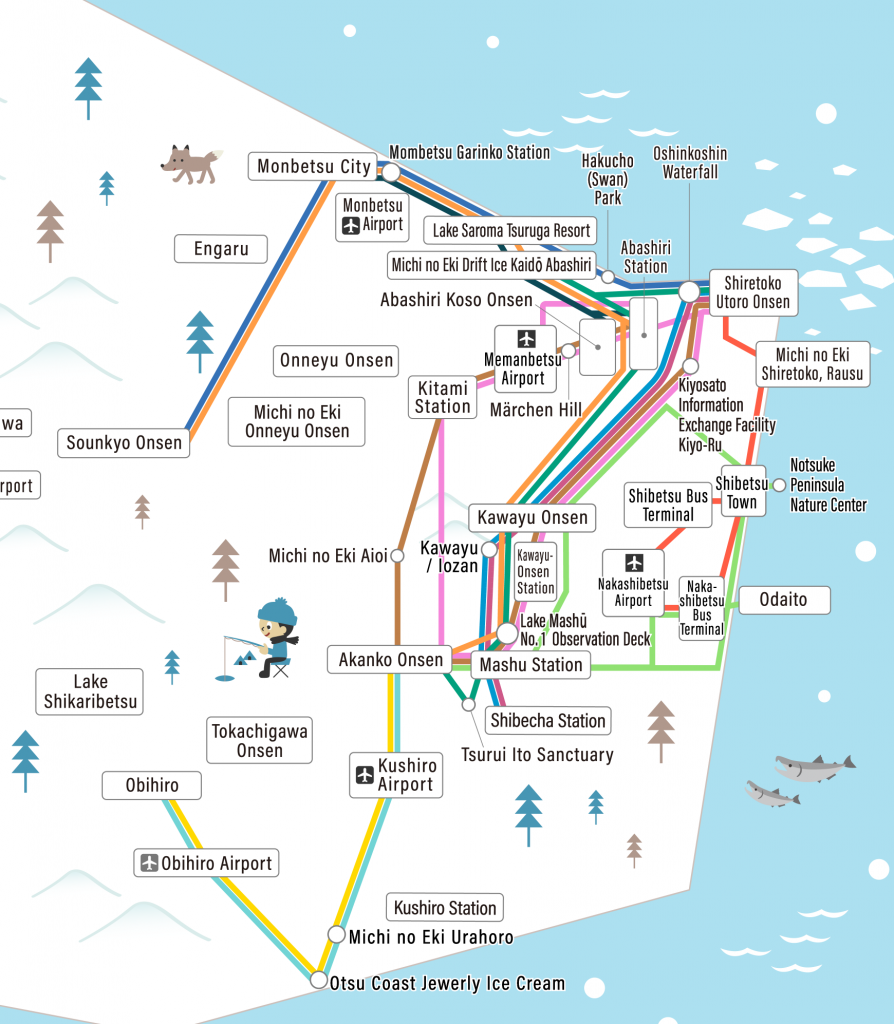
There are regular trains (all year round) and special winter only trains available and the same website as the buses has information on the kind of journey you can expect. As with the buses and flights, the train details are only for up to 2 months ahead, so you can’t see exactly when the trains run in advance. The Japanese only website has timetables up to 3 months in advance if you are willing to search a bit. However, as you can’t book flights until 3 months and the prices probably won’t be cheapest until 2 months, it is best to wait for 2 months before traveling and then plan everything at once. Apart from the special Winter only trains (that “When Japan” cannot link to as they deleted the page until next winter), regular trains cannot be booked in advance; you just turn up on the day.
Use the map here and look up the various thing you want to visit. There is an example schedule “When Japan” used on a visit to Hokkaido in 2010, or you can look online for other examples (or plan your own). “When Japan” suggests you print out the map and plan carefully in order to avoid missing connections as most buses are once a day in one direction only.
What order to visit places (what buses you will take)
NOTE: Direction of bus routes is important!!
Each bus route goes in one direction ONLY. To go back the way you came, you have to choose a different route!
As you can see from the map above, most buses run between Monbetsu City Airport and Mashu Station, taking in the major towns and tourist spots on the way. Mashu Station is connected to most nearby airports. Usually one bus journey is half a day at least and the less time spent on the bus the better so a plan that doesn’t double back is more time efficient. You may have to reverse course to get your ideal trip (remember to read the big yellow warning box above) however the more buses you add, the higher the chance of missing something or a connection being cancelled due to bad weather.
The bus website is great however the little maps don’t show start and end points, so unless you are really familiar with the area, you will start to get lost trying to figure out which direction each bus is traveling. Below are all the routes individually, with directions and start and end times. You can then figure out what is physically possible.
ADD THE MAPS
Where to stay (hotels, Hot Springs, etc.)
There aren’t going to be a fantastic amount of options in such a remote area of Japan, so probably best to stick to the list here, which seems fairly complete. “When Japan” always uses Jalan however it is Japanese only. There are a few things to note: –
- There are no Hot Springs in Abashiri and Monbetsu, where the sea ice boats are. So you will have to stay at a hotel, of which there are plenty.
- Shiretoko is the only place you can walk on the sea ice. It is also the only place with Hot Springs unless you go into Akan-Mashu National Park. Shiretoko also has lots of nature walk snow tours.
- There are shuttle buses to Mashu Lake, so you don’t have to go directly there on the express bus (gives you way more options).
- You can’t drive up to Lake Mashu so if you are driving, you will have to park someone first and get a bus.
Golden rules
Travelling in Hokkaido in winter is a challenge due to the snow, infrequent transport and limited English in use. Many of the hotels, Hot Spring Inns and activity tours will only be in Japanese, which may mean they are off-limits to most foreign tourists. You will also have to battle a large number of Taiwanese and Chinese tourists that come on buses to see the sea ice. Foreign tourist numbers have doubled in the last 5 years, so expect the boats to be fairly busy especially the highly popular sunset tours.
Make sure to plan meticulously in advance to sync up your flights in and out with the buses and hotel reservations, and with the activities you wish to do. Take note of the drop off and pick up points for the buses and activities so that your hotel is close by. Do not miss a bus as they are almost always limited to once a day. And wrap up warm!
